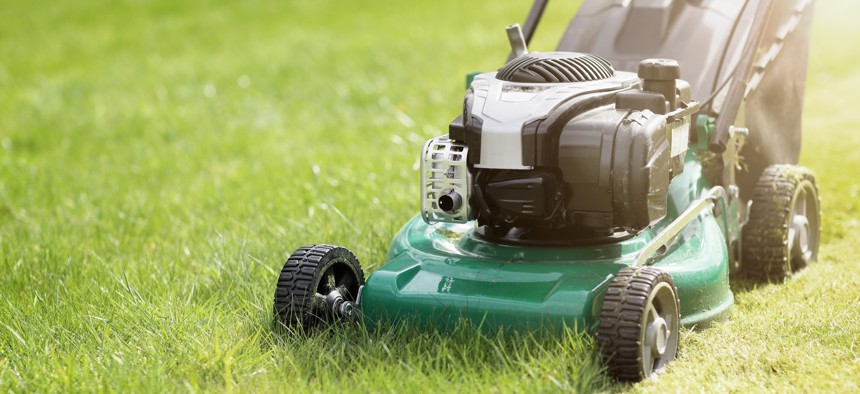California First State to Outlaw Gas-powered Lawn Mowers and Leaf Blowers

iStock.com/BrianAJackson
The legislation comes with $30 million in funding to help aid the transition. Other states and localities have or are considering restricting the equipment.
California is the first state to outlaw all gasoline-powered lawn equipment, requiring new lawn mowers and leaf blowers with small off-road engines to be zero-emission by 2024. The legislation comes with $30 million in funding to help aid the transition.
California has a surplus of gasoline-powered lawn equipment and generators, totaling more than 16.7 million statewide, and lawn mowers and leaf blowers are exceptional polluters, according to Ars Technica.
Their small off-road engines spew outsize amounts of smog-forming NOx (oxides of nitrogen), cancer-causing volatile organic compounds and lung-damaging particulate matter, according to Ars Technica. Operating a gasoline-powered leaf blower for one hour produces as much volatile organic compounds and NOx as driving a 2017 Toyota Camry from New York City to Orlando, Florida.
“The primary issue we are looking to tackle is air pollution, and in particular, what we refer to collectively as smog-forming pollution, which is both reactive organic gases and nitrogen oxides that are produced by the engines,” said Dorothy Fibiger, air resources engineer testing at California Air Resources Board. “Those contribute to the formation of particulate matter and ozone, which have some real health implications.”
The bill signed by Gov. Gavin Newsom requires the board to adopt “cost-effective and technologically feasible regulations” to prohibit engine exhaust and evaporative emissions from new small off-road engines by July 1, 2022, according to the report. Those regulations will apply to small off-road engines produced on or after Jan. 1, 2024, or as soon as the board determines it is feasible.
The law also requires the board to make funding available for commercial rebate or similar incentive funding for air districts to implement to support the transition to zero-emission small off-road equipment operations, the report contends.
However, for the past few years, the board has been running what the members call their ‘zero-emission equipment road show’ that allows landscaping organizations to borrow equipment. According to Christopher Dilbeck, manager of the board’s testing and certification section of the monitoring and laboratory division, the organizations can use the equipment for a few weeks with no obligation or responsibility.
"Getting landscaping organizations to recognize that there's new equipment that's more powerful and more capable is difficult, but we find that once people try it, they're often very pleased with it,” said Dilbeck. “They're able to try it with no strings attached and then see what they really think.”
Critics of the Legislation
The National Association of Landscape Professionals opposes the new California rules. “We are not trying to say we want gas-powered equipment forever. We get it, [electric is] coming,” Andrew Bray, vice president of government relations, told The Washington Post. “All we’re asking for is a little more time.”
Bray explained to the Los Angeles Times that the zero-emission commercial-grade equipment landscapers use is more expensive and less efficient than the existing gas-powered lawn mowers, leaf blowers and other small machinery. Bray also said that landscaping crews will be responsible for carrying an estimated 30 to 40 fully charged batteries while on the job.
Transitioning to Zero Emissions
Vendors will be prohibited from selling any of those products manufactured after July 1, 2024 in California.
Municipalities across the country, as well as Hawaii, have enacted some form of leaf blower restrictions.In Dec. 2018, Washington, D.C. Mayor Muriel Bowser signed a bill banning the use of gas-powered leaf blowers, to go into effect in 2022.
“Transitioning as much equipment to zero emissions is the goal of what we're proposing so that people will have the benefits of decreased exposure to toxins from the engines,” said Dilbeck. “This way, people will be less likely to have an injury or die from carbon monoxide poisoning, and there will be a reduction in noise, odor and vibration.”
Andre Claudio is an assistant editor at Route Fifty.
NEXT STORY: Supreme Court Will Consider if Fundamental Right to Keep a Gun at Home Applies to Carrying in Public





